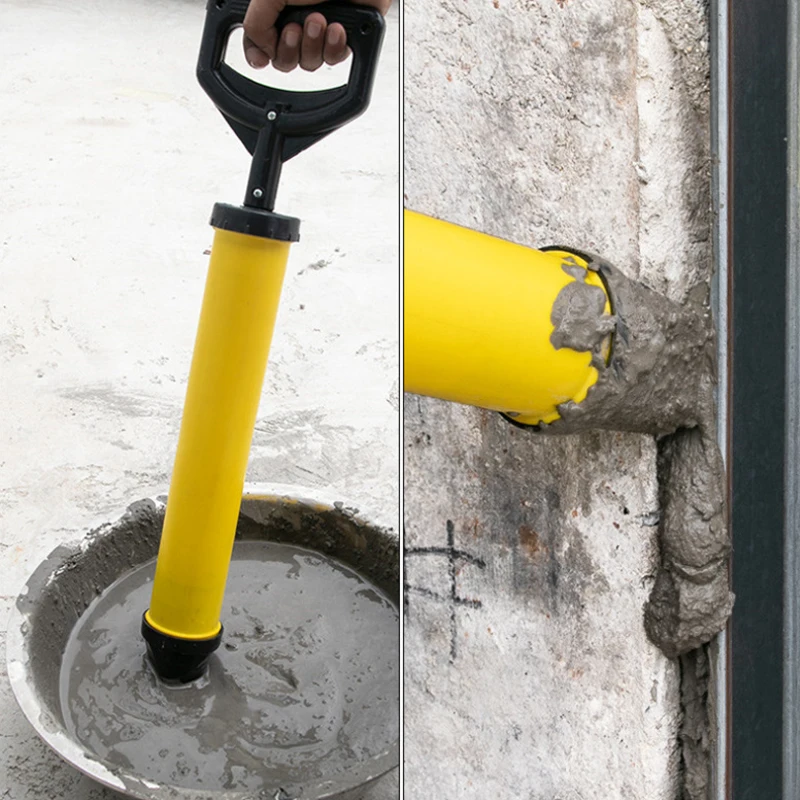This stage of the Cementing in drilling process comprises the slurry preparation and pumping equipment at the surface and the down-hole hardware. A vast array of equipment and tools are available from specialized manufacturers and Service Companies and a brief description of the various items, to explain their purpose and function in the cementing processes and operations, is provided in this chapter. Detailed information is readily available from the cementing operator and in the public domain.
In most operations, the surface equipment for blending and pumping cement slurry belongs to a Cement Service Company, contracted to provide this service. The layout of the hardware varies, but in general, will include the following items.
Dry cement is transported from the supplier or Service Company yard to the oil and gas company premises or directly to the well-site by road, rail, or carried on a supply boat for off-shore operations. On-site the cement is stored either in bulk silos, big bags, or sacks.
Bulk silos come in various sizes and shapes, depending on whether part of a stationary installation or a mobile unit and available space. The fairly standard size is 38 m3 (1350 cubic feet), also frequently used for other bulk commodities such as bentonite and barite. The silos are fitted with nozzles for blowing air to ‘fluidize’ the dry material and some arrangements to gauge the contents, for example, a load cell.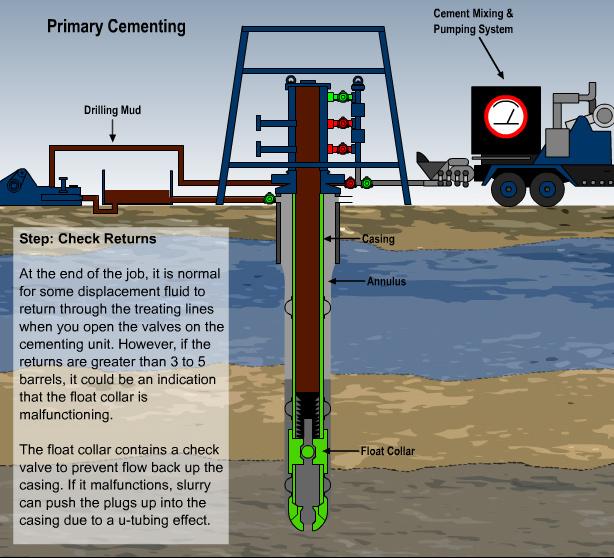 A man-hole at the top allows visual checking of the contents as well as recovery of a sample. However, it is preferred to take the latter from the transport line or manifold during transfers, through a special proportioning device to collect a representative sample. For dry-blending operations, a “weighing” silo of small capacity mounted on a weighing device is required.
A man-hole at the top allows visual checking of the contents as well as recovery of a sample. However, it is preferred to take the latter from the transport line or manifold during transfers, through a special proportioning device to collect a representative sample. For dry-blending operations, a “weighing” silo of small capacity mounted on a weighing device is required.
When tanks are topped up a representative sample should be taken from the tank after “fluffing-up” to homogenize its contents.
Bulk storage is generally considered to offer operational convenience over the other two alternatives. It requires compressed air to move the dry powder and manifolding to allow movements between silos. Care should be taken to use dry air for the pneumatic transport to avoid lumps of cement blocking lines. For offshore operations, this mode of handling cement is nearly universal, although in a few cases big bags are used. A further point to note is avoidance of cross-contamination from other bulk materials (barite, bentonite).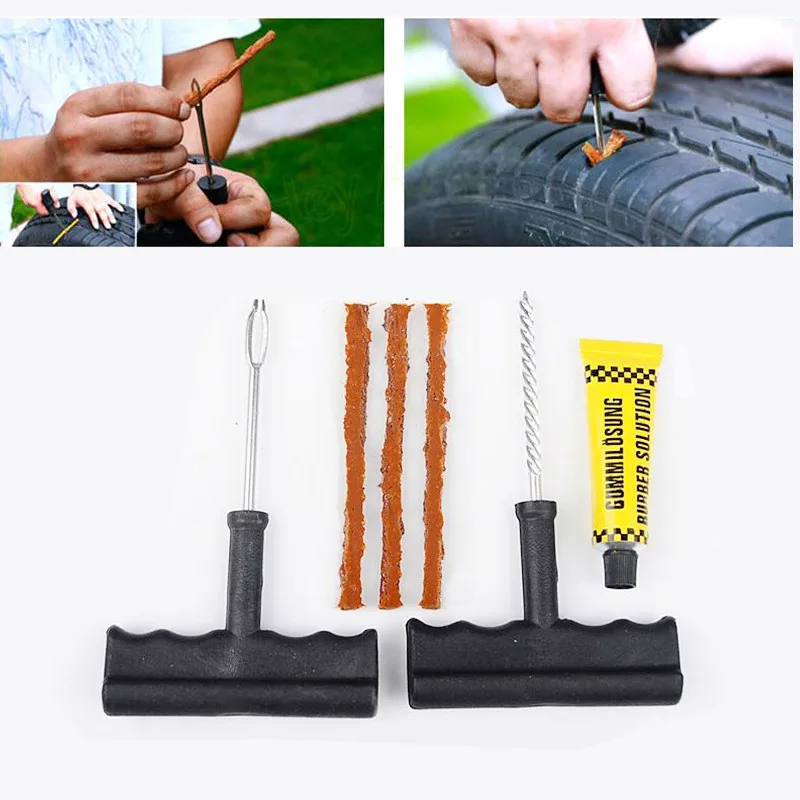
Cement in sacks needs to be cut near the mixing tools facility, making for a rather messy operation. The occupational health and environmental/waste aspects of this cement handling mode should be weighed against the convenience and cost considerations. In general, it is advised to use bulking facilities wherever possible. A standard cement sack contains 42.6 kg (94 lbs) of cement or 0.028 m3 (1 cubic foot) bulk volume, although a metric equivalent of 50 kg is increasingly becoming available.
Big bags, containing up to 1.5 tonnes of cement, have to be lifted and positioned above the tub of a jet mixer or the hopper for a recirculation mixer. Occupational Health and environmenta1/waste implications are significantly lower than in the case of ordinary sacks. Big bags also offer a higher degree of flexibility compared to sacks and do not require the (high) investment of bulking facilities. Party-used bags should be resealed and stored in a dry place. Big bags are recommended where bulking facilities are not available in preference over sacks.
Big bags are recommended where bulking facilities are not available in preference over sacks.
The preparation of a slurry is done by blending the cement with the mix water exerting sufficient shear to disperse particles and to promote proper yielding into a homogeneous mass. The blending is done in the cementing unit. This can be a (semi)-permanently installed facility on off-shore rigs or a mobile one called in for the job.
A cementing unit includes various pumps to move slurry between stages.
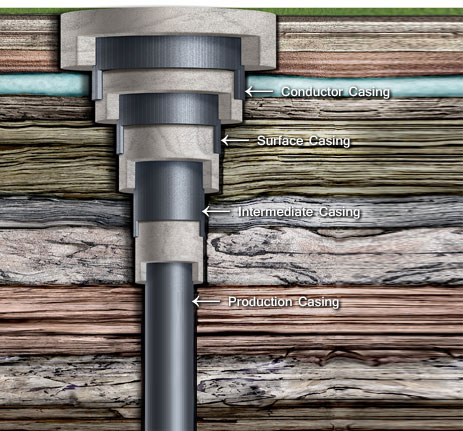 The units are capable of delivering between 0.6 -and 1.65 m3/min of cement slurry at pressures ranging from 102 to 37 MPa (15000 to 5500 psi) depending on the plunger tool size.
The units are capable of delivering between 0.6 -and 1.65 m3/min of cement slurry at pressures ranging from 102 to 37 MPa (15000 to 5500 psi) depending on the plunger tool size.The slurry prepared in the cementing unit is usually pumped to the casing head through a temporary connection made up with Chicksans. In some operations, a permanent line is installed to connect the cementing unit with the stand-pipe manifold on the drill floor. The connection to the cementing head is made through a short length of high-pressure hose or made up with Chicksan joints. Secondary or remedial cementing is usually carried out through drill pipe and cementing stinger or coiled tubing. In this case, the slurry is delivered to the stand-pipe manifold or CT unit, either through a temporary connection or a dedicated delivery line.
Cementing unit Equipment is designed for pumping cement into the well.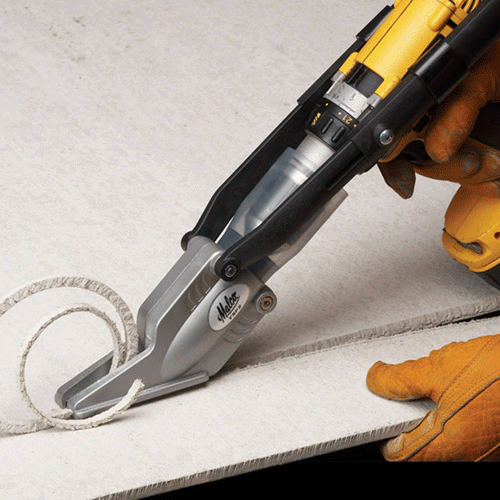 They are used for drilling, workover, and killing well operations (driller’s method – wait and weight method). In Cementing Units article, we have discussed its main components and types.
They are used for drilling, workover, and killing well operations (driller’s method – wait and weight method). In Cementing Units article, we have discussed its main components and types.
The main components of the cementing unit:
Cementing Unit Types
The choice between the types of casing and casing sizes to be run and cemented is dictated by the well design and therefore outside the scope of this article. However, to improve the chances of achieving successful primary cementation several items of auxiliary equipment are incorporated in the string.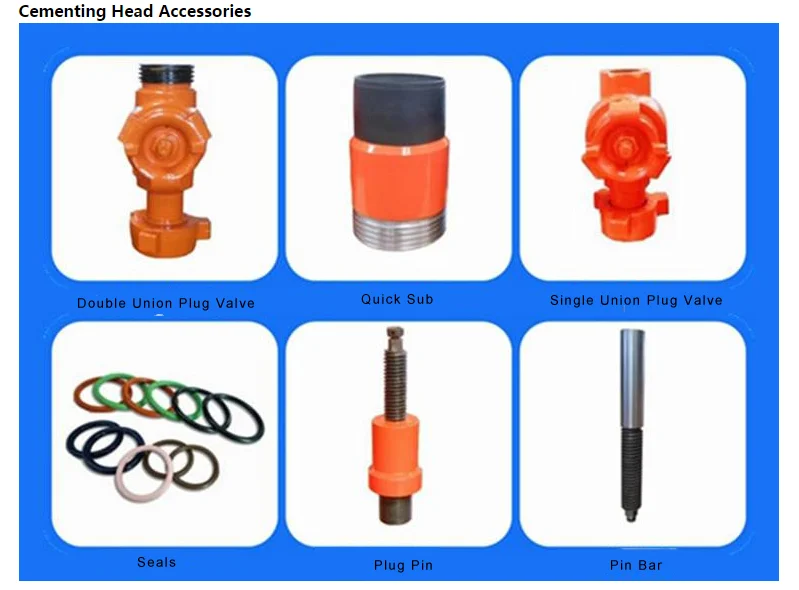
These cementing tools are usually placed two joints above the shoe. Sometimes the float collar is combined in a float shoe. Its purpose is that of a check valve preventing backflow after the cement has been placed in the annulus and retaining the cement interface inside to ensure good cement around shoe. This is done most of the time by a spring-loaded ball or flapper suitably seated to seal.
After running and setting in the rotary table slips, a cementing head is mounted on top of the casing. This tool also contains one or more plugs to separate cement, pre-flushes) etc., from mud before and after pumping/displacement. The plugs are retained in the cementing head by pins or bars, which are pulled out at the appropriate time to release the plug, or bails, which are rotated to drop a plug. Plugs are moved by switching to the appropriate fluid connections on the head.
Plugs available from cementing service companies come in a variety of shapes and sizes. The selection of plug(s) for a particular job should be guided by local experience. One feature to be considered is the rotation of plugs when drilling out. Nowadays plugs (and floats) are available that have been manufactured with a serrated top and or bottom profile, permitting the plugs to lock when seated.
The selection of plug(s) for a particular job should be guided by local experience. One feature to be considered is the rotation of plugs when drilling out. Nowadays plugs (and floats) are available that have been manufactured with a serrated top and or bottom profile, permitting the plugs to lock when seated.
Centralisers Positioning of the casing as close as possible to a concentric configuration undoubtedly will enhance displacement of the annular contents. Bore-holes very seldom exhibit the much desired ‘gun barrel’ shape and smoothness. Most of the time the holes are corrugated with wash-outs and ledges and have a more or less elliptical cross-section. This is particularly true for directional drilling. Running a casing in these holes, without auxiliary equipment to correct for its shape, invariably results in sagging of the casing to one side.
This will increase the danger of the casing getting differentially stuck ( check also free point calculation for stuck pipe).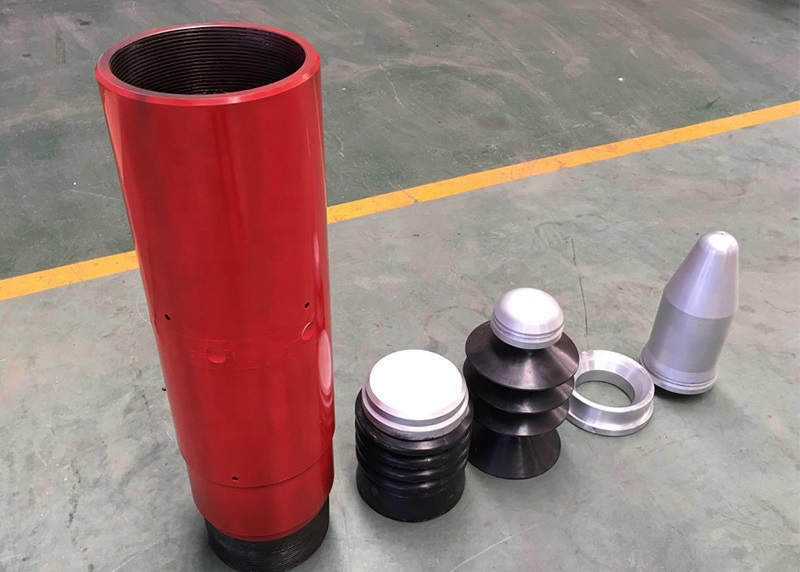 Centralizers are used to center the casing in the bore-hole as closely as is possible and to increase the stand-off, defined as the eccentricity divided by the radius difference between casing OD and hole.
Centralizers are used to center the casing in the bore-hole as closely as is possible and to increase the stand-off, defined as the eccentricity divided by the radius difference between casing OD and hole.
Less popular, scratchers can be installed to scrape excessive mud cake deposited over permeable hole sections. These accessories are attached between stop rings, allowing a certain amount of ‘travel’ during reciprocation of pipe in the cementing stage. The wire and cable types are most commonly used. The design differs according to the casing cementing mode, i.e. whether or not movement (rotation/reciprocation) is exercised during cement displacement and/or prior circulation.
The shoe is the leading edge of the casing (or casing liner). The purpose of this cementing tool is to ease the passage of the pipe through the previous casing and the open hole section beneath. To this end, the shoe has been given a rounded shape.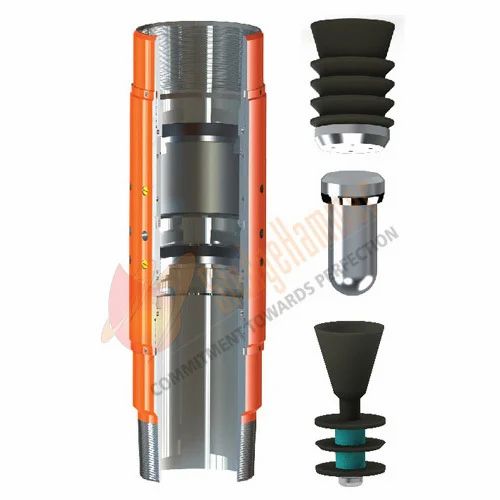 It is (partly) made of molded cement insert or cast aluminum to facilitate drilling out for the next hole section. The shoe comes in various shapes and can be obtained from Cementing Service Companies.
It is (partly) made of molded cement insert or cast aluminum to facilitate drilling out for the next hole section. The shoe comes in various shapes and can be obtained from Cementing Service Companies.
Multi-stage cementing may be necessary where circulation losses would prevent cement from reaching the required depth or the hydrostatic pressure from the fluid column above a weak zone would induce fracturing and/or losses. Multi-stage cementing requires the incorporation of tools such as stage or port collars in the casing string, to provide selectable access to the annulus.
Cement stinger is used in special cases ad cementing large-diameter casings, set cement plugs in which drill pipe is placed inside the casing as the conduit for pumping fluids from the surface to the casing annulus.
Permanent packers, (one of the types of packers) also referred to as ‘cement retainers’, are available from several Service Companies (Baker Model K and Dowell Schlumberger Johnston Hornet are examples).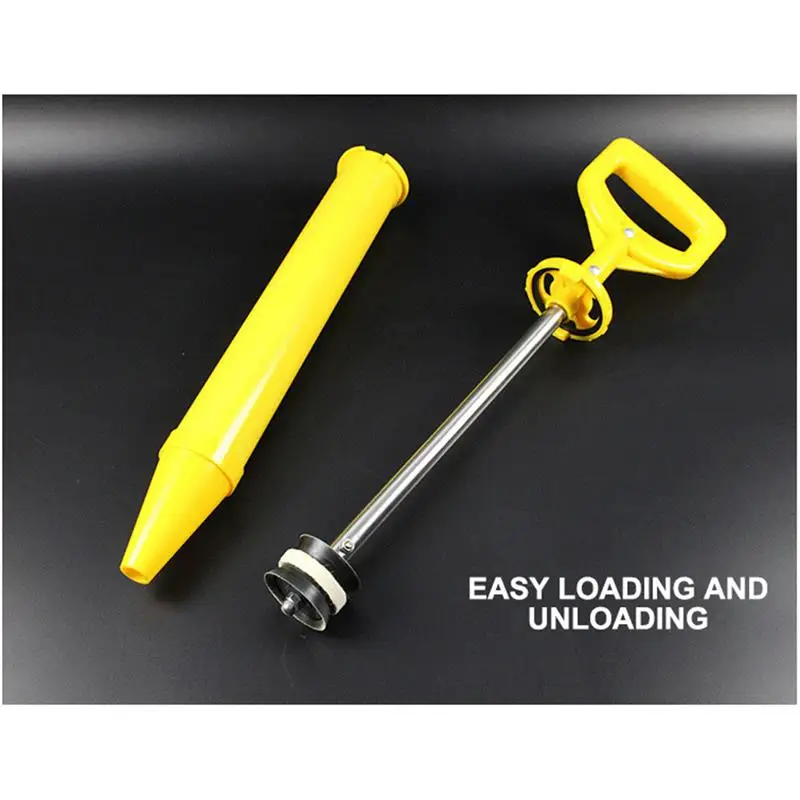 These tools have a check-valve function, to prevent backflow, which is activated when the cement stinger or tubing is pulled back.
These tools have a check-valve function, to prevent backflow, which is activated when the cement stinger or tubing is pulled back.
These inflatable devices are often used instead of a cement basket in multi- stage cementing. ACPs are strictly pack-off devices and their main attraction is the protection of weak formations below a stage cementing tool against excessive hydrostatic pressure or contamination. They are also used to prevent gas or fluid migration and have the further advantage of contributing to casing centralization.
Whether it's for hardscaping your driveway, walkway, patio, or any other DIY project, be sure to have this list of tools for working with concrete or cement.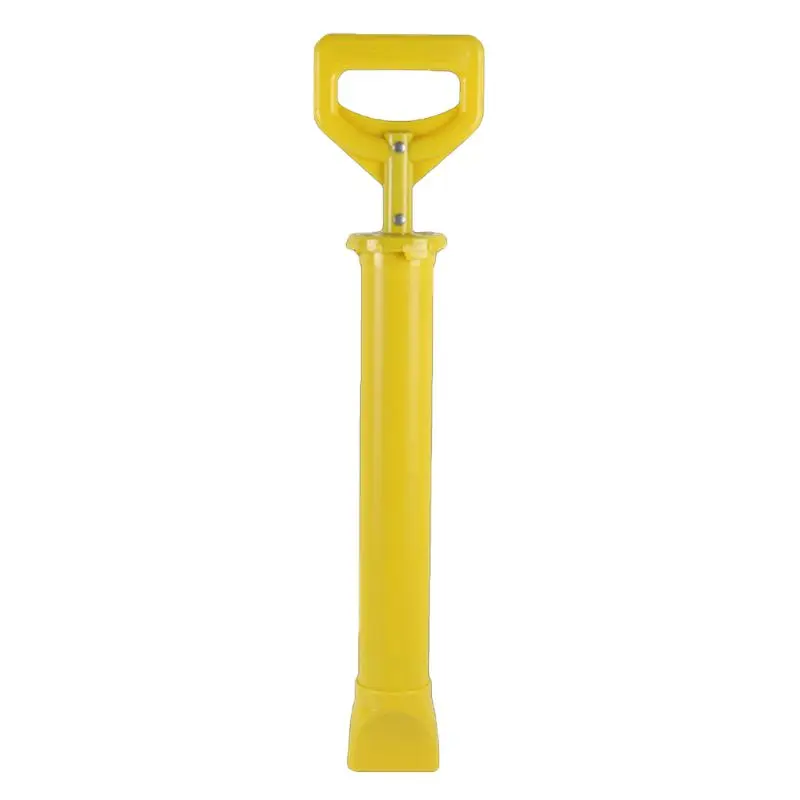 We feature 20 different types of concrete or cement tools you should have at home.
We feature 20 different types of concrete or cement tools you should have at home.
Concrete or cement is one of the favorite go-to hardscaping features for many builders and DIY enthusiasts. Its characteristic durability, versatility, and affordability just add to its appeal. There are plenty of tools you can use for working with cement or concrete so choosing among them can get overwhelming.
When it comes down to choosing the right tools, consider how you want to go about your concrete-related task. You can create and accomplish just about anything with concrete or cement as long as you have the right tools at hand.
Related: Concrete houses | Concrete driveway examples | Types of concrete houses | Best concrete cleaners | Concrete driveways
ScreedA screed is used to help smooth out your concrete once you have put it where it needs to be. This tool is going to be really helpful when you need to get rid of excess concrete from the surface. It is really easy to use, and you won’t need to be a professional to handle this tool properly. Just scrape it across the surface, and use it to get the concrete as smooth as it can possibly be.
It is really easy to use, and you won’t need to be a professional to handle this tool properly. Just scrape it across the surface, and use it to get the concrete as smooth as it can possibly be.
You need to be able to move the concrete that you have poured around. In order to get the concrete where it needs to be, you will have to use a tool to push it around a bit. You could use a normal rake for this purpose, but using a come-along rake would work even better. These rakes have been specially designed for the purpose of moving concrete around.
When you take a look at these rakes, you will see that they have a scooped blade. This makes them really good at doing pre-leveling work on fresh concrete. If you are going to be pouring concrete, then it will be a good idea to seek out one of these rakes. You may have to look around to find one, but if you can get your hands on one, it will definitely make your concrete job a lot simpler.
Circular SawsYou will find that people use circular saws pretty often on construction sites where concrete or cement work is being done.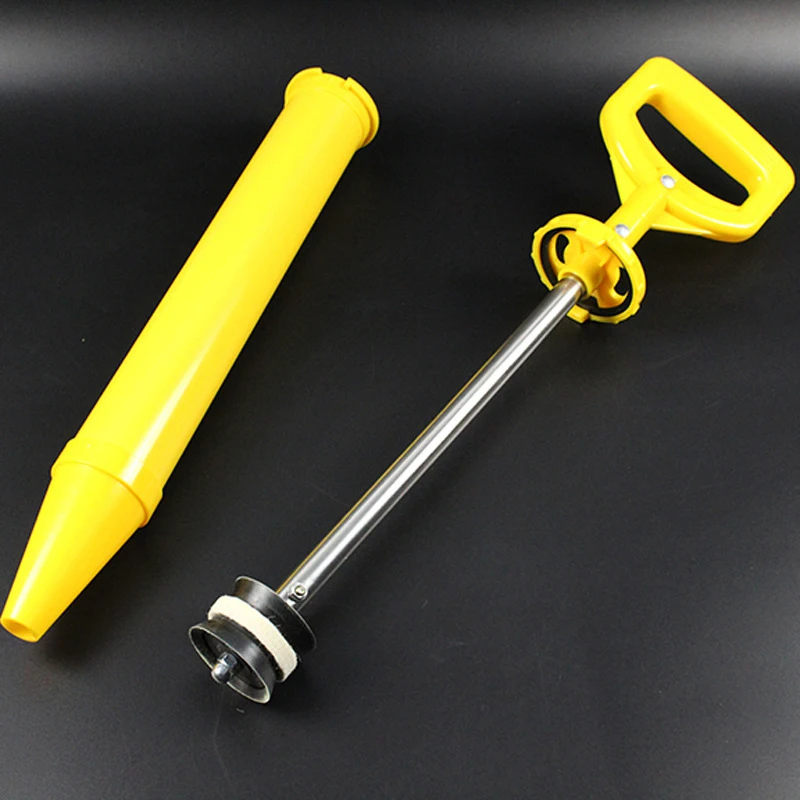 The reason for this is that it is sometimes necessary to cut into slabs and remove certain things. Certain aspects of the job can go wrong, and you may need to make some cuts to remedy a problem. Having access to a good saw that is going to be able to make the cuts quickly is imperative.
The reason for this is that it is sometimes necessary to cut into slabs and remove certain things. Certain aspects of the job can go wrong, and you may need to make some cuts to remedy a problem. Having access to a good saw that is going to be able to make the cuts quickly is imperative.
Circular saws work perfectly for this. They are easy to use and can cut through anything that you need them to rather quickly. You can get a nice circular saw at a pretty reasonable price, so it’s worth making the investment. This will be good to have around when you’re doing a big concrete or cement job.
ShovelsShovels are obviously one of the most common types of tools that exist. You will be able to make use of a good shovel in many different ways. When it comes to helping with concrete and cement jobs, these shovels are going to be used to help move the concrete around. You may need to fill in small gaps that exist after the concrete has been poured, and you’re going to need a good shovel to accomplish this.
Finding a shovel won’t prove to be a problem. Buy a shovel that is very sturdy, and everything should work out quite nicely. You will be able to get the concrete or cement where it needs to go, and the job will be that much closer to completion. Just be sure to have enough shovels for all of your helpers as well.
CompactorThe compactor isn’t something that will immediately come to mind when you are thinking of tools for concrete and cement jobs. These compactors are used to prepare the ground where the concrete is going to go. Sometimes it is necessary for the stone or aggregate on the surface to be compacted into a proper position. This compactor will work well for those purposes and is going to come in handy.
This is a pretty expensive machine, but it can be worth your while to purchase one. If you need to make sure that the aggregate or stone on the ground is settled into place properly, then buying a good compactor makes sense. It is possible that you may not need one of these, too. Everything really depends on your specific situation, so take everything into account before deciding if you need to make a purchase.
Everything really depends on your specific situation, so take everything into account before deciding if you need to make a purchase.
It makes sense that wheelbarrows would be necessary when working with concrete and cement. You need to have a reliable way to move your materials back and forth on the job site. Whether you are an amateur who is trying to install a patio, or if you are a professional who is working a large-scale job, you will want to have a wheelbarrow. They are going to make everything a whole lot easier for you, and it won’t cost you a lot of money to get a nice one.
You may want to purchase several wheelbarrows if you are planning on doing a large cement or concrete job. It can be convenient for you to have something to hold your materials when they aren’t in use, and one wheelbarrow may simply not be enough. You should also do your best to buy a heavy duty wheelbarrow. Purchasing something that is going to be able to handle a heavy workload is highly recommended.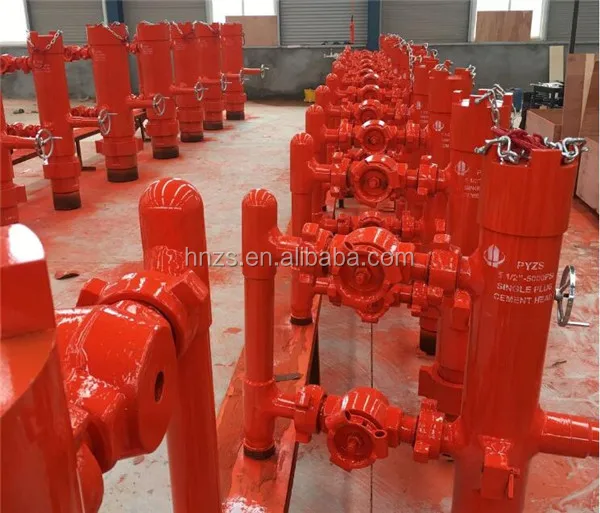
Mixing concrete and cement is one of the most important aspects of this job. If you can’t mix things properly, then you aren’t going to be getting very far with your job. The mixer being shown off here is a very nice cement mixer that can be used by both professionals and amateurs alike. You will be able to mix concrete very effectively using this tool and will love how good it works.
This may seem like an expensive tool to some, but when you consider the utility of the cement mixer, it is actually very cost-effective. You will be able to make use of this cement mixer in order to complete many home projects. If you are a do-it-yourself enthusiast who wants to install a patio, then this is going to be the perfect mixer to help you accomplish that. It is a high-quality mixer that will do a great job for you.
Bull FloatPeople typically use the bull float after the screed work has been completed.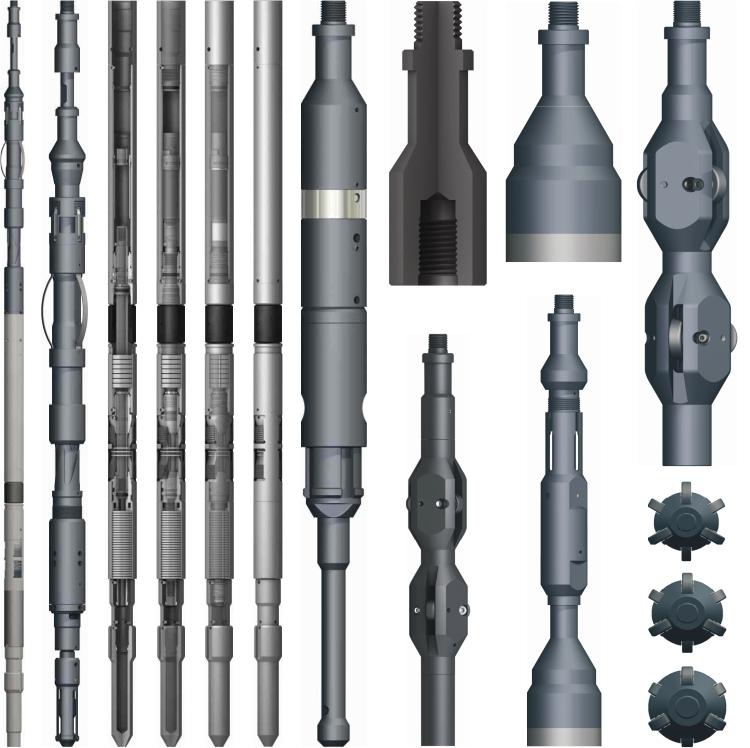 You will make use of this bull float to fill in any empty spaces that have been left in the concrete after using the screed. This shouldn’t be a difficult process, but it is definitely an important one. Most bull floats have wide blades and long handles, so you’ll be able to reach wherever you need to without too many issues.
You will make use of this bull float to fill in any empty spaces that have been left in the concrete after using the screed. This shouldn’t be a difficult process, but it is definitely an important one. Most bull floats have wide blades and long handles, so you’ll be able to reach wherever you need to without too many issues.
You can also find some bull floats on the market that have telescopic handles. This can be really convenient because they will be able to be moved around at different angles. If you are worried about being able to reach certain positions with your bull float comfortably, then it might be worthwhile to purchase one with a telescopic handle. Otherwise, a normal bull float should do the job superbly.
Magnesium FloatSource: Amazon
The magnesium float will wind up being among the first tools that you use when working with concrete. This float will be able to level things out when the concrete is wet. Some people make use of excess boards to level out the wet concrete.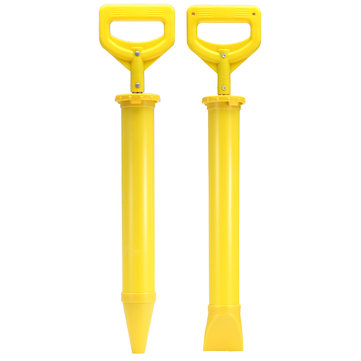 This isn’t going to be nearly as effective as using a proper magnesium float, so you will want to have the tool available to use.
This isn’t going to be nearly as effective as using a proper magnesium float, so you will want to have the tool available to use.
If you want your concrete to look good, then you need to level it out during different steps of the process. Getting your wet concrete leveled is essential, so you will want to use the magnesium float to its full potential. These tools will be crucial to have when you want to have your concrete project turn out properly. Take the time to purchase one so that you can have good results.
Finishing TrowelThe finishing trowel is one of the most iconic concrete tools that you can think of. People often think of a finishing trowel right away when concrete tools are brought up. This trowel is very useful for helping you to finish up your concrete project. It will allow you to have a smooth finish on your concrete area.
All you need to do is run the finishing trowel across the concrete surface.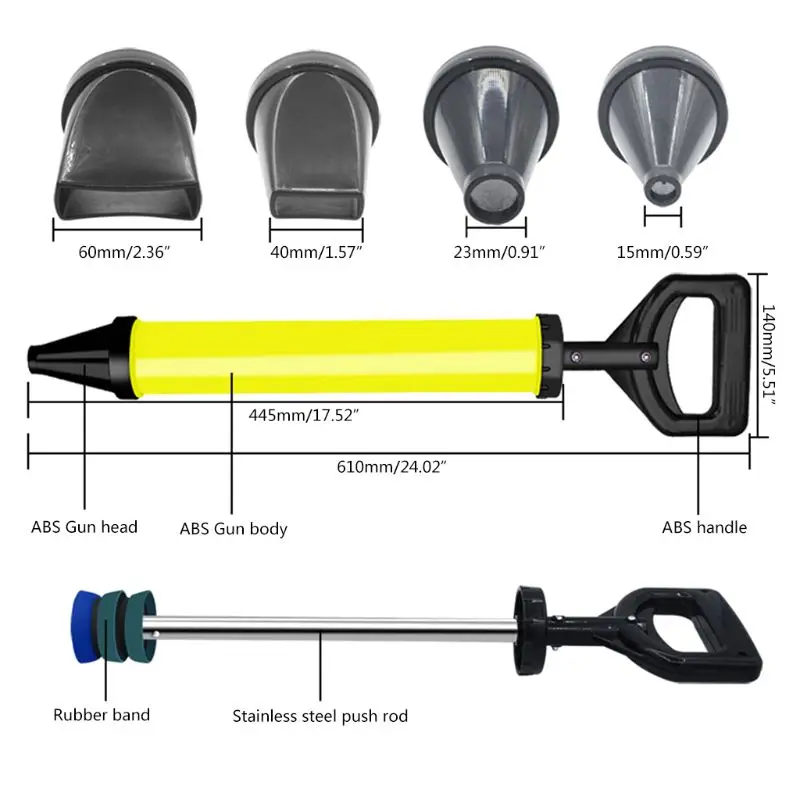 It is simple in concept and is very effective at what it does. Using this trowel is going to bring some of the water to the surface of the concrete. You will keep smoothing things out, and it will be set up nicely to harden.
It is simple in concept and is very effective at what it does. Using this trowel is going to bring some of the water to the surface of the concrete. You will keep smoothing things out, and it will be set up nicely to harden.
Concrete edging tools are used right when the concrete is starting to harden up. You will run this edger across the concrete and away from the boards that you have set up. This is an important part of the process, and you will want to pay attention to the concrete itself to determine exactly when it begins to harden. In order to finish the concrete properly, you will need to use this edger well.
Thankfully, this is a really easy process overall. It may feel a bit tedious to run the concrete edger across the concrete, but the results are going to be worth your efforts. You will be able to help ensure that the concrete will be finished properly by doing this. Concrete edging tools are very affordable, so you will want to be sure to purchase them before you start your concrete project.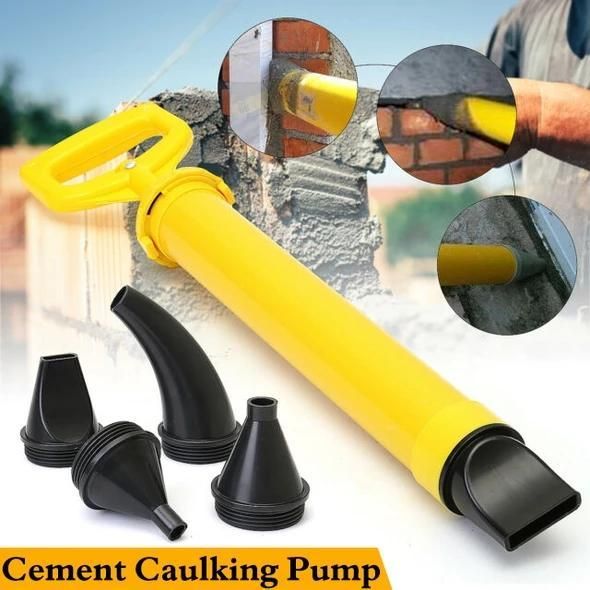
You will notice that concrete will crack sometimes when you are working with it. To keep this from happening, you will need to grab your concrete control joint hand groover to take care of the problem. The process of making use of this tool involves using 2x4s. You need to run the tool across the edge of the board and smooth out the surface of the concrete.
This will help to keep the concrete from cracking on you. Generally, if the concrete does crack, you will be forcing it to crack around the joint rather than somewhere in the middle. This will keep your concrete looking as nice as it can. You need to be diligent when you are working with concrete and keep things smooth in order to get the best results.
Pressure WasherPressure washers come in handy for so many different things around the house. Even professionals make use of these pressure washers to help them with certain parts of the process.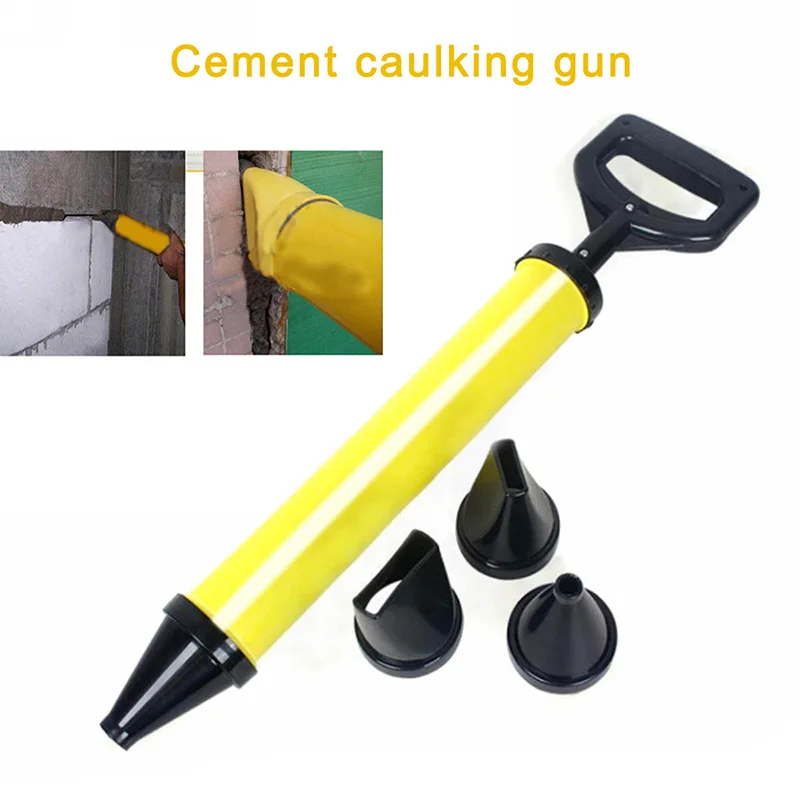 You will want to bring out your pressure washer in order to clean up concrete surfaces before they are resurfaced. Resurfacing jobs are a big part of the concrete business, so you will want to be able to clean off the old concrete effectively.
You will want to bring out your pressure washer in order to clean up concrete surfaces before they are resurfaced. Resurfacing jobs are a big part of the concrete business, so you will want to be able to clean off the old concrete effectively.
A powerful pressure washer is going to be capable of getting rid of all sorts of debris that is on the top layer of the old concrete. It will pretty much completely remove the top layer of the concrete. This will ensure that everything is completely ready for the resurfacing process to begin. You won’t want to neglect cleaning the old concrete thoroughly because you want the resurfacing to look as good as it possibly can.
Buying a pressure washer for these purposes shouldn’t be too difficult, but you will want to make sure that you’re buying a powerful one. Purchasing one of the gas-powered pressure washers is generally going to give you better results than the electric options. Gas-powered units are far more powerful than the electric ones, and you will be able to clean the concrete surface much more swiftly.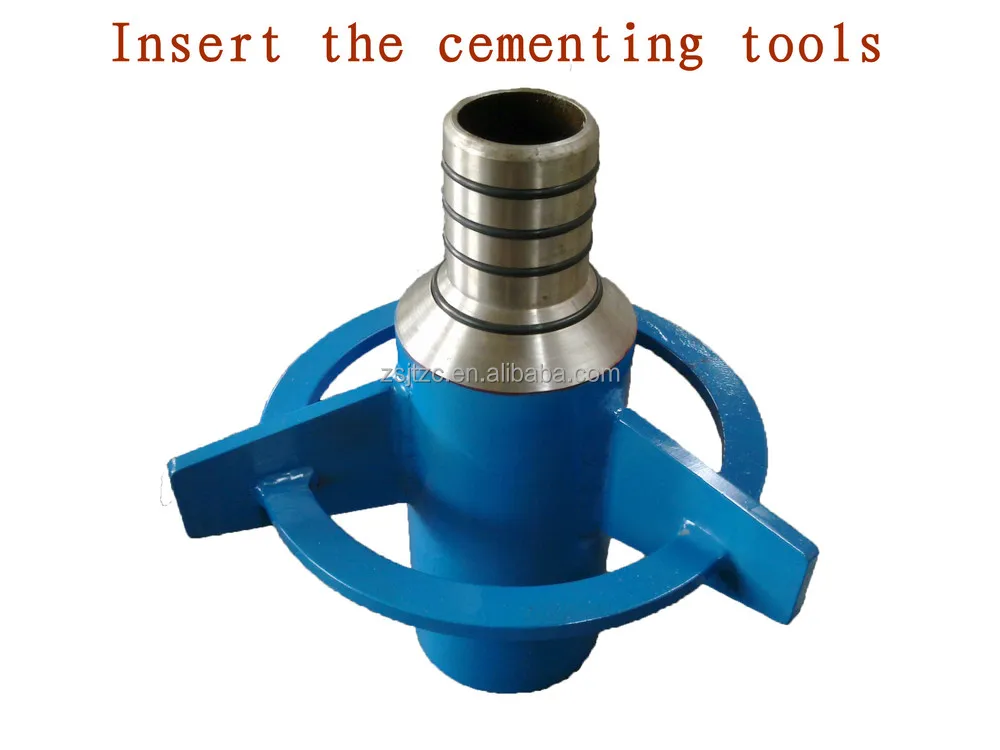 You should be able to find a good deal on a nice gas-powered pressure washer, so you won’t have to fret over the price too much.
You should be able to find a good deal on a nice gas-powered pressure washer, so you won’t have to fret over the price too much.
These concrete finishing brooms are a very important tool to have around. Using this broom is going to help to provide texture to the concrete. You do this by running the broom up and down the surface of the concrete. This will help your concrete to become more skid-resistant while also giving it the proper look.
The bristles of this broom are made out of horsehair, and this is a very fine product. You won’t want to use just any old broom for this purpose. You should definitely seek out a specific concrete finishing broom. Working with concrete is something that takes a lot of time, so you don’t want to waste all of that hard work by doing things improperly when you’re right at the finish line.
Finding one of these brooms shouldn’t be too tough. You will be able to purchase them at major hardware stores and can always order one online if you need to.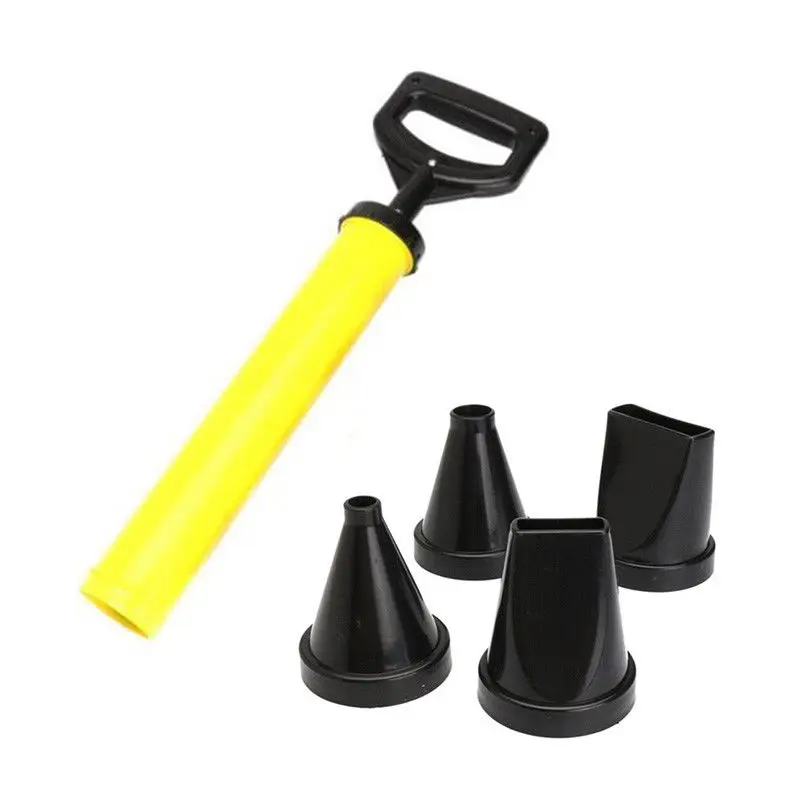 They will be a bit more expensive than a traditional broom, but it is going to be a worthwhile purchase. Make good use of it to finish your concrete, and you will be able to enjoy the results soon enough.
They will be a bit more expensive than a traditional broom, but it is going to be a worthwhile purchase. Make good use of it to finish your concrete, and you will be able to enjoy the results soon enough.
Once your concrete has dried, and it is properly set up, you may want to look into making it look a bit nicer. It is possible to use a polisher or a grinder to increase the overall aesthetic appeal of your concrete. This will make the concrete look like it is finished and completely smooth. Concrete that has been properly polished will generally shine quite nicely.
If you use the grinder, then you will be able to create an effect that looks a bit different. The finish will be more distressed and some people find this to be even more appealing. The tool being shown off here is both a polisher and a grinder, so you will be able to use it for whatever purpose you would like. This is going to allow your concrete to look its best, and you will be able to sit back and admire your work once it’s done.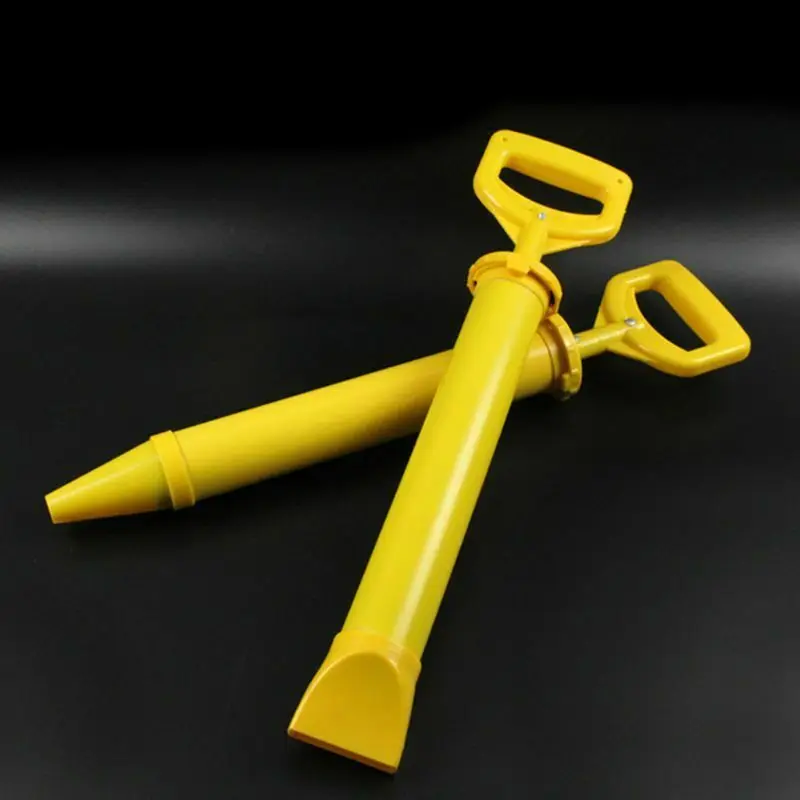
Source: Amazon
Kneeling boards are really useful when you are troweling your concrete. You will want to have something that you can kneel down on comfortably to make the task a bit more manageable. Buying a good kneeling board will definitely make the process feel a bit easier. You can find several different styles of kneeling boards, but the one being shown here is made out of solid steel.
This is going to allow you to feel supported while working on the wet concrete. A good kneeling board will be able to move across your slabs without having any problems. You will want to buy one of these if you have a large surface area that you need to trowel. Smaller projects can probably get by without a kneeling board though, so use your best judgment, and determine whether or not this is going to be a good purchase for you.
Concrete VibratorsConcrete vibrators are something that will work very well to strengthen your concrete.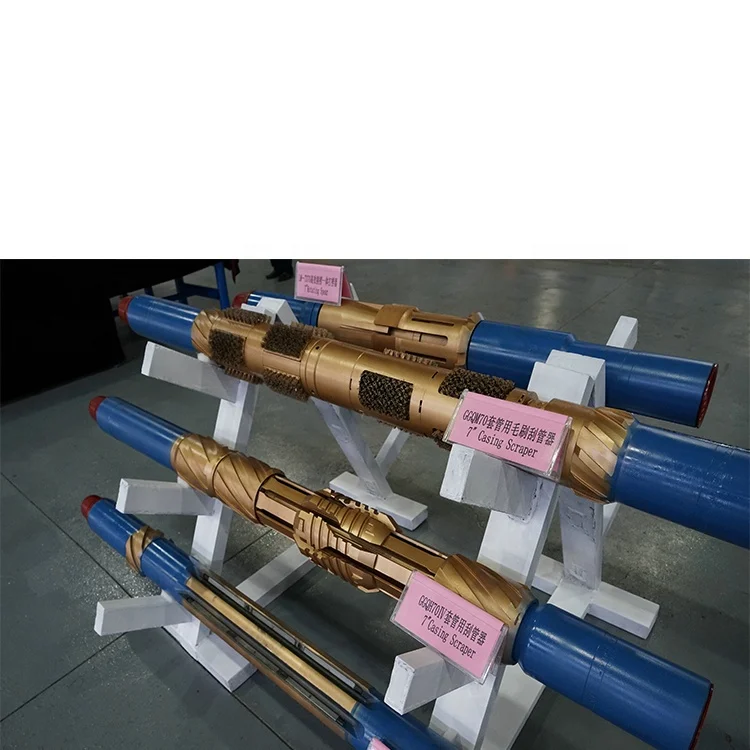 They can help you to get rid of excess water and any pockets of air that will cause problems for the concrete. These concrete vibrators are fairly pricey, so it isn’t going to be an easy tool for you to purchase. Regardless, the benefits of using one are great, and it is something that you will want to consider.
They can help you to get rid of excess water and any pockets of air that will cause problems for the concrete. These concrete vibrators are fairly pricey, so it isn’t going to be an easy tool for you to purchase. Regardless, the benefits of using one are great, and it is something that you will want to consider.
Making use of a concrete vibrator is something that could help you avoid potentially big problems with the concrete itself. The unit being shown here is very lightweight, and you will be able to make use of it with ease. It has many convenient safety features that will prevent overloading, and you can rely on it to do its job well. If you want to look into strengthening your concrete, then this is going to be a good option to consider.
Work GlovesWork gloves are going to be part of your daily routine while you are working on a concrete or cement job. You need to keep your hands from coming into contact with either the concrete or the cement.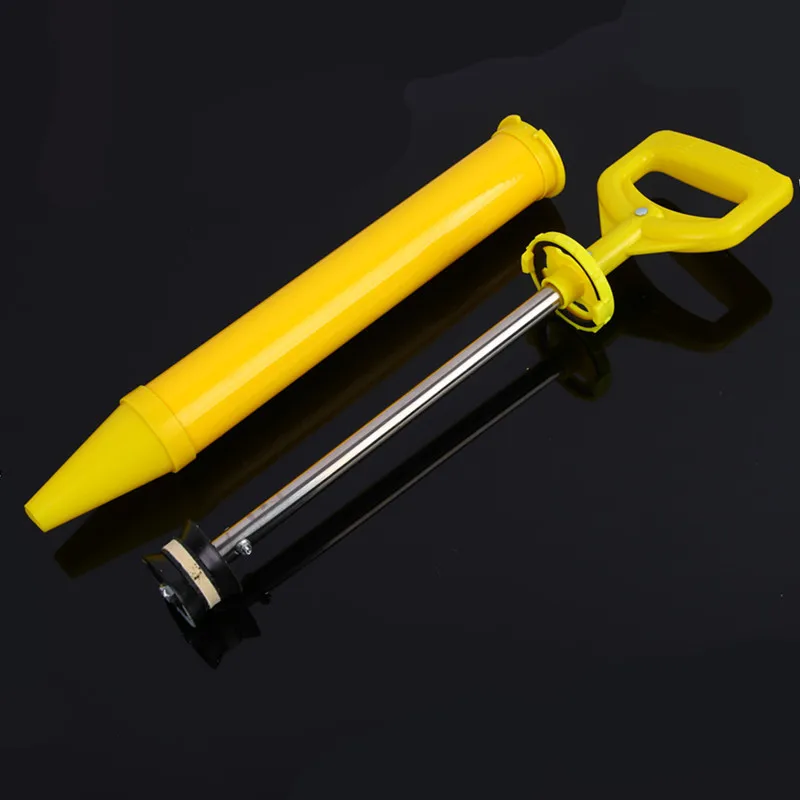 This stuff is really nasty when it gets on your skin, and you want to avoid it whenever possible. A good set of work gloves won’t restrict your dexterity, but it will keep you safe.
This stuff is really nasty when it gets on your skin, and you want to avoid it whenever possible. A good set of work gloves won’t restrict your dexterity, but it will keep you safe.
You don’t need to spend an exorbitant sum of money to get a good set of work gloves, either. Buying these work gloves will help to keep you from getting burned by the caustic concrete mixes. You won’t get nearly as many blisters when you’re using a good set of gloves, either. Buy some today to make your work experience a lot more comfortable.
Rubber BootsRubber boots are absolutely essential for anyone who is planning on working with concrete or cement mixing. This is a process that can get quite messy, and you need to be able to protect yourself. Wearing a good pair of rubber boots will help to keep the cement or concrete from making contact with your skin. You don’t want to ruin a pair of normal boots, so buying rubber boots that are waterproof and meant for these purposes is highly recommended.
A good pair of these boots may cost you a little bit of money, but it is going to be worthwhile. This will allow your feet to stay dry and your workday is going to be significantly more comfortable. Buying the stuff that you need for the job is going to make things go better. Get yourself some good rubber boots to make sure that you have a good experience.
Laser LevelThis may not be the first thing that you think about when working with concrete and cement, but buying a laser level is hugely important. You need to be sure that your concrete is being poured onto a level surface. For this reason, it is crucial that you use a laser level to determine if everything is level and whether the elevation is correct. Using a laser level is best because these are highly accurate and will give you all of the necessary information.
You should use the laser level again after the concrete has been poured. This will allow you to double check that everything is as it should be.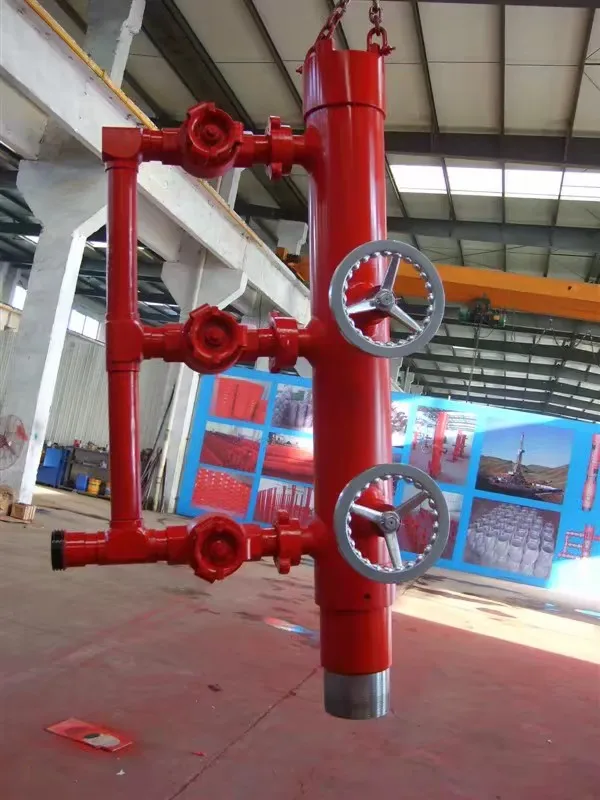 These laser levels are pretty costly but they are very worthwhile. Professionals will need to own a good laser level, and it might be worthwhile for amateurs to look into it as well.
These laser levels are pretty costly but they are very worthwhile. Professionals will need to own a good laser level, and it might be worthwhile for amateurs to look into it as well.
The effective operation of any well is impossible without careful and reliable sealing of the space between the casing pipes and the soil. Sealing is achieved by a special operation - well cementing with the help of special technological equipment.
ContentHide
Let's make a reservation right away that all equipment for well cementing, without exception, is a special technique, so it is impossible to manufacture it at home "on your own".
At the same time, you need to know that well cementing is an irreversible and irreparable process.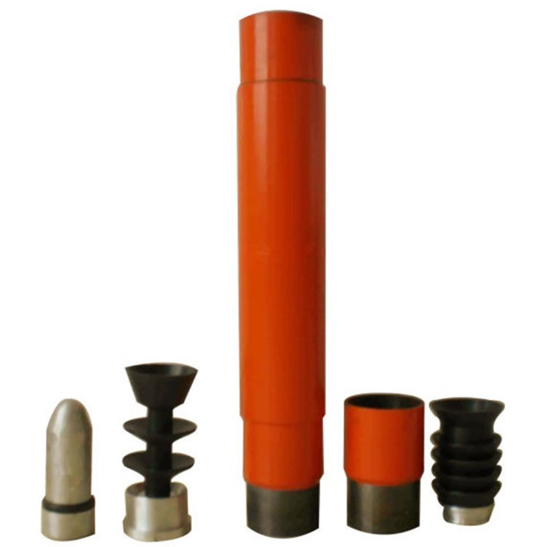 Therefore, any amateur activity leads to significant time and financial losses for the “re-drilling” of the structure.
Therefore, any amateur activity leads to significant time and financial losses for the “re-drilling” of the structure.
Main well cementing equipment - cement mixing machines and cementing plants. When performing this operation, it is necessary to “have on hand” significant volumes of cement-sand mortar, which is simultaneously pumped into the well space under the action of high pressure.
These units carry out the following operations:
The following mixing plants and units of domestic production can be involved in the production and technological process of cementing: AUM, OSB-II-30, US-IV, US6-30, SMR-20, UCP, cementing heads and special fittings.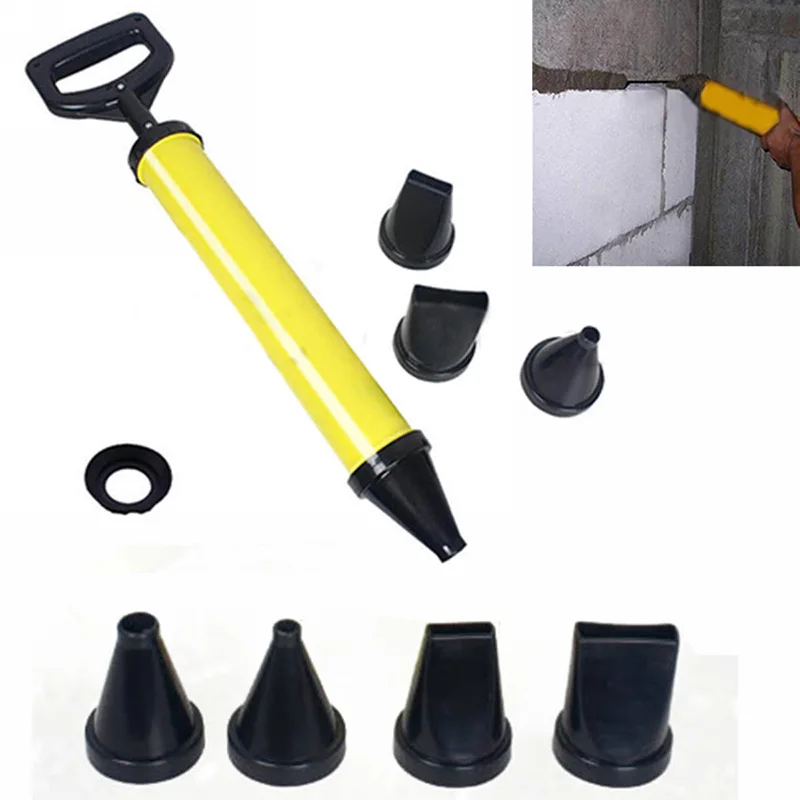
Mixing plants are used for transporting cement, cement slurry, sand, etc., adjusting the amount of supply of these materials and mixing cement slurries for well cementing and hydraulic fracturing of aquifers.
The USB-30 mixing plant is the most popular. The machine is designed for transportation of powdered components of cement mixtures and is equipped with a mechanically adjustable supply (dosing) of materials (cement, sand, etc.). The system consists of a hopper, a power take-off mechanism from a regular engine, a transmission, a mixing head, loading and dosing conveyors, control devices and auxiliary mechanisms.
Loading and unloading is done automatically by dosing conveyors. In this case, the drive of the conveyors is carried out through the power take-off from the regular engine of the machine. Loading of the installation is carried out by vacuum method using a vacuum compressor or by gravity through the hatches of the bunker. Unloading of cement mixture – pneumatic.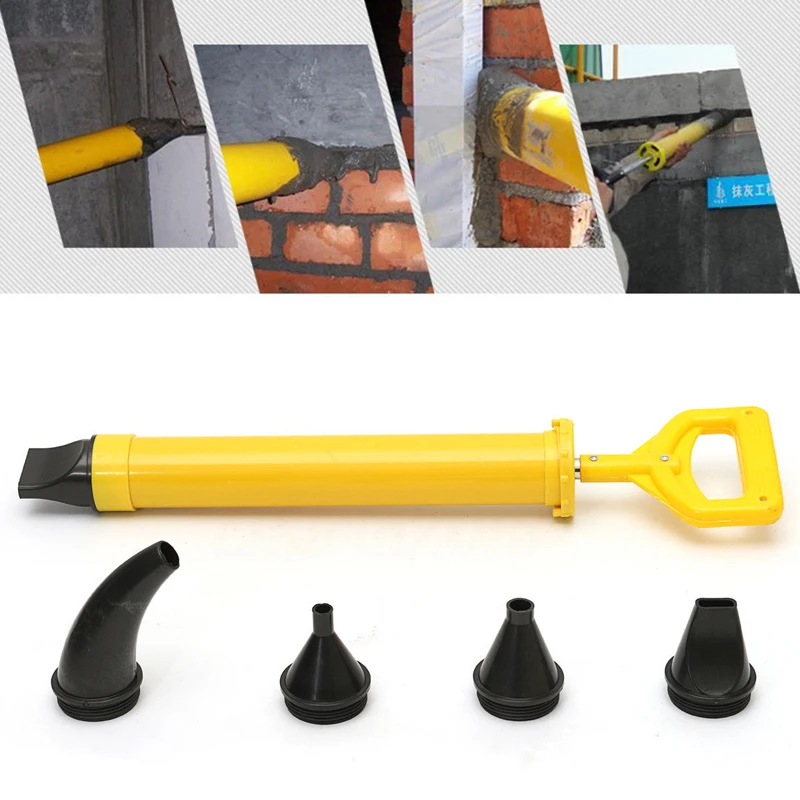
Cementing head (HCC or HCC) is one of the main types of equipment for well cementing and is designed for wellhead piping. Modifications of this equipment differ from each other in design, dimensions and technical characteristics.
At the same time, the HTC cementing heads are supplied with standard high-pressure valves. This allows you to insert the cementing plug in advance, which eliminates the need for its disassembly-assembly during the cementing process. FCC heads are supplied without high-pressure valves, so the cement plug is inserted into it after the cement slurry is pumped.
Cementing reinforcement is installed at the wellhead. This equipment is designed to ensure the tightness of the connection between the tubing and casing pipes, "squeeze" the cement slurry into the well body and build up fluid pressure during well flushing.
As can be seen from the foregoing, well cementing works are related to special technological processes, which are characterized by strict requirements for observing the technology stages. Therefore, cementing of any wells, including water-pressure private structures, should be carried out by professionally trained performers with appropriate special logistics, preliminary calculations and geodetic surveys.
Therefore, cementing of any wells, including water-pressure private structures, should be carried out by professionally trained performers with appropriate special logistics, preliminary calculations and geodetic surveys.
The document is no longer valid or cancelled. See Help 9 for details0003
"OK 013-94. All-Russian classifier of fixed assets" (approved by the Decree of the State Standard of the Russian Federation of December 26, 1994 N 359) (date of introduction 01.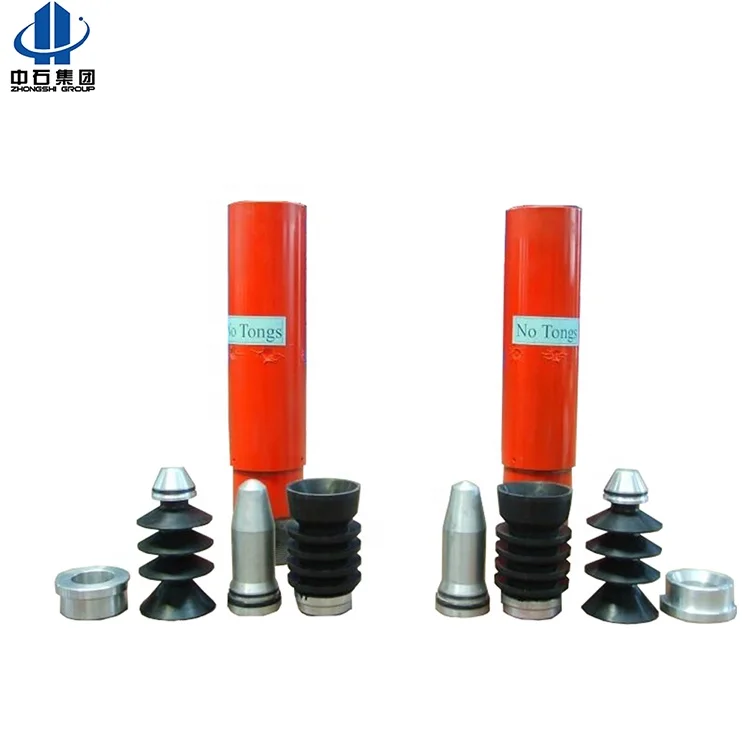 01.1996) (as amended on 04/14/1998)
01.1996) (as amended on 04/14/1998)
| 14 2928060 | 3 | Equipment for the development and repair of oil and gas wells, intensification of production and cementing of wells (ground equipment for the development and repair of wells; for tripping and lifting operations, for the mechanization of labor-intensive field operations; for cementing wells; for active impact on oil reservoirs; for thermal well treatment; surface near-wellbore other) |
| 14 2928520 | 6 | Ground well completion and workover equipment |
| 14 2928521 | 4 | Complexes of equipment for the development and workover of wells |
| 14 2928522 | 2 | Lifting, hoisting and flushing installations and oilfield winches |
| 14 2928523 | 0 | Installations (assemblies) for well development |
| 14 2928524 | 9 | Service towers and masts |
| 14 2928525 | 7 | Rotors, individually driven rotary sets and their drives |
| 14 2928526 | 5 | Pumping units and units for well completion and workover |
| 14 2928527 | 3 | Service swivels |
| 14 2928529 | 4 | Other surface equipment for well completion and workover |
| 14 2928530 | 3 | Equipment for tripping and lifting operations in production wells (except lifting mobile equipment) |
| 14 2928531 | 1 | Service crown blocks |
| 14 2928532 | 7 | Travel blocks |
| 14 2928533 | 8 | Service hooks |
| 14 2928534 | 6 | Operating hook blocks |
| 14 2928535 | 4 | Pulleys |
| 14 2928539 | 7 | Other lifting equipment |
| 14 2928540 | 0 | Equipment for the mechanization of labor-intensive field work |
| 14 2928541 | 9 | Tools for making and breaking tubing |
| 14 2928542 | 7 | Make-up and break-out mechanisms for deep-seated sucker rods |
| 14 2928543 | 5 | Equipment for installing pipes by a finger and hanging rods on a chandelier |
| 14 2928544 | 3 | Equipment for complex mechanization of round trip operations |
| 14 2928545 | 1 | Installations and devices for the mechanization of various field operations |
| 14 2928550 | 8 | Equipment for the repair, maintenance and transportation of oilfield production equipment |
| 14 2928551 | 6 | Devices and mechanisms for the repair of oilfield production equipment |
| 14 2928552 | 4 | Appliances and mechanisms for servicing oilfield production equipment |
| 14 2928553 | 2 | Special means of transportation for operational oilfield equipment |
| 14 2928554 | 0 | Equipment for preparatory work during the repair and maintenance of production wells |
| 14 2928555 | 9 | Tools and fixtures for servicing downhole production equipment |
| 14 2928560 | 5 | Equipment for cementing (except downhole), hydraulic fracturing, hydrosandblast perforation, flushing and acidizing of the bottomhole zone |
| 14 2928561 | 3 | Pumping units |
| 14 2928562 | 1 | Equipment for mobile pumping units |
| 14 2928563 | 5 | Mixing plants |
| 14 2928565 | 6 | Manifold blocks |
| 14 2928566 | 4 | Wellhead equipment for production stimulation, flushing and cementing of wells |
| 14 2928567 | 2 | Hammer drills and controls |
| 14 2928568 | 0 | Flush swivels |
| 14 2928569 | 9 | Other cementing, stimulation and washing equipment |
| 14 2928570 | 2 | Equipment for active stimulation of oil reservoirs (including for simultaneous separate operation) |
| 14 2928571 | 0 | Pumping units for pumping water and other liquids into reservoirs and plunger pumps for them |
| 14 2928572 | 9 | Steam generation units for injection of steam into reservoirs |
| 14 2928573 | 7 | Equipment for creating and maintaining an in-situ combustion front |
| 14 2928574 | 5 | Equipment for water treatment and preparation of solutions of various chemical reagents and their dosed supply to injection wells |
| 14 2928575 | 3 | Gas Injection Equipment |
| 14 2928576 | 1 | Wellhead equipment for injecting various agents into reservoirs |
| 14 2928577 | 8 | Downhole equipment for injection of various agents into the reservoir (except for packers) |
| 14 2928578 | 8 | Injection control equipment |
| 14 2928579 | 6 | Other equipment for active stimulation of oil reservoirs |
| 14 2928580 | 0 | Equipment for thermal treatment and dewaxing of wells |
| 14 2928581 | 8 | Mobile steam generators |
| 14 2928582 | 6 | Installations for electric heating of the bottomhole formation zone |
| 14 2928583 | 4 | Hot oil well dewaxing units |
| 14 2928584 | 2 | Downhole equipment for various methods of heat treatment and dewaxing of wells |
| 14 2928589 | 3 | Other well dewaxing equipment |
| 14 2928590 | 7 | Surface equipment for well work (with wire, rope, cable, as well as pipes with a sealed wellhead) |
| 14 2928591 | 5 | Pressure well lifting rigs with wire, rope and cable |
| 14 2928592 | 3 | Integrated lifting rigs for well work under pressure with wire, rope and cable |
| 14 2928593 | 1 | Integrated lifting rigs for well work under pressure with pipes |
| 14 2928594 | 3 | Wellhead equipment for pressure well work with wire, rope, cable and pipes |
| 14 2928595 | 8 | Power and control systems for pressure well operations |
| 14 2928596 | 6 | Hoists and winches for downhole operations without wellhead sealing |
| 14 2928599 | 0 | Other surface equipment for well work |
14 2928050 Equipment for the operation of oil and gas wells (flowing and gas lift equipment; for production with oil pumps; for separate operation of several layers; downhole pumps, etc.